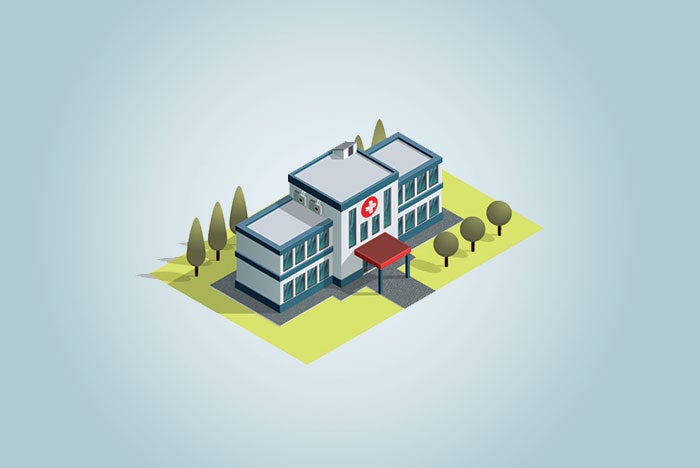Microhospitals can help to raise system profiles
Microhospitals provide “as much presence curbside as you can possibly get,” says Rod Booze, AIA, NCARB, ACHA, partner in the Texas office of health care architecture firm E4H. A facility of this type must gain a sense of credibility at first glance to people driving by; features like canopies and double-volume lobbies can make a strong statement to the public that a facility houses top-notch professionals who deliver the highest-quality care, Booze says.
“Anyone seeking health care is probably seeking it for a serious reason,” says Michael Pukszta, AIA, director of CannonDesign’s global health practice. “Design solutions that are elegant and beautiful and build a level of confidence in the people who are arriving” can be accomplished at almost any scale, he says. “It doesn’t have to be large to be competent.”
The intimacy of a smaller building can be beneficial to creating a comforting health care environment, Pukszta notes. In health care design, “you’re always trying to make it feel a little more human, and at a massive scale, that’s sometimes hard to do,” he says.
Lessons learned in the design of small regional cancer centers are informing CannonDesign’s approach to microhospital design. “The cancer centers we do tend to be very serious, but often at a smaller scale. We’re taking those same perspectives to [microhospital] facilities as well,” says Pukszta.
Facility designs can help to establish microhospitals as part of a health network. Vic Schmerbeck, executive vice president of strategy and business development for microhospital developer Emerus, Houston, says each of the four microhospital facilities Dignity Health–St. Rose Dominican health system plans to open this year in the Las Vegas area feature consistent design themes. “The exterior matches the look and feel of the Dignity Health hospital and medical group brand throughout the community,” he says.
Kevin TenBrook, AIA, LEED AP, CSI, NCARB, partner at PhiloWilke Partnership, Houston, says that for health systems with an established design vocabulary, the firm uses interior and exterior finishes that conform to that vernacular.
For systems with a less well-defined architectural brand, the design can represent the values of the organization, so the facility is “consistent with the mission of the institution,” says Pukszta.
Design cues, such as familiar materials and presentation, landscaping and amenities, can help people to recognize that with a microhospital, “the namesake [hospital] comes to you,” Booze says.
Amy Eagle is a freelance journalist based in Homewood, Ill., who specializes in health care-related topics. She is a regular contributor to Health Facilities Management.


